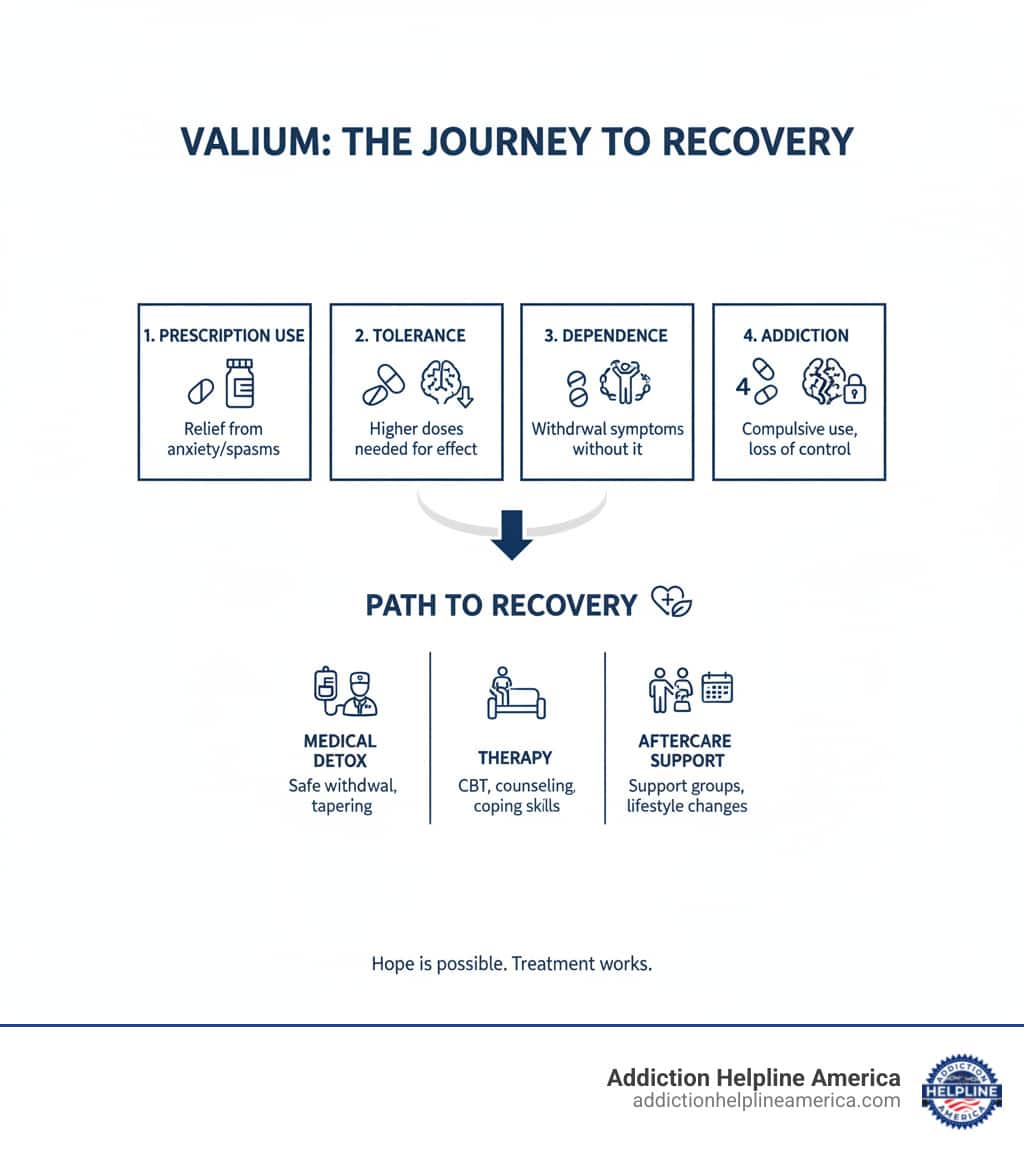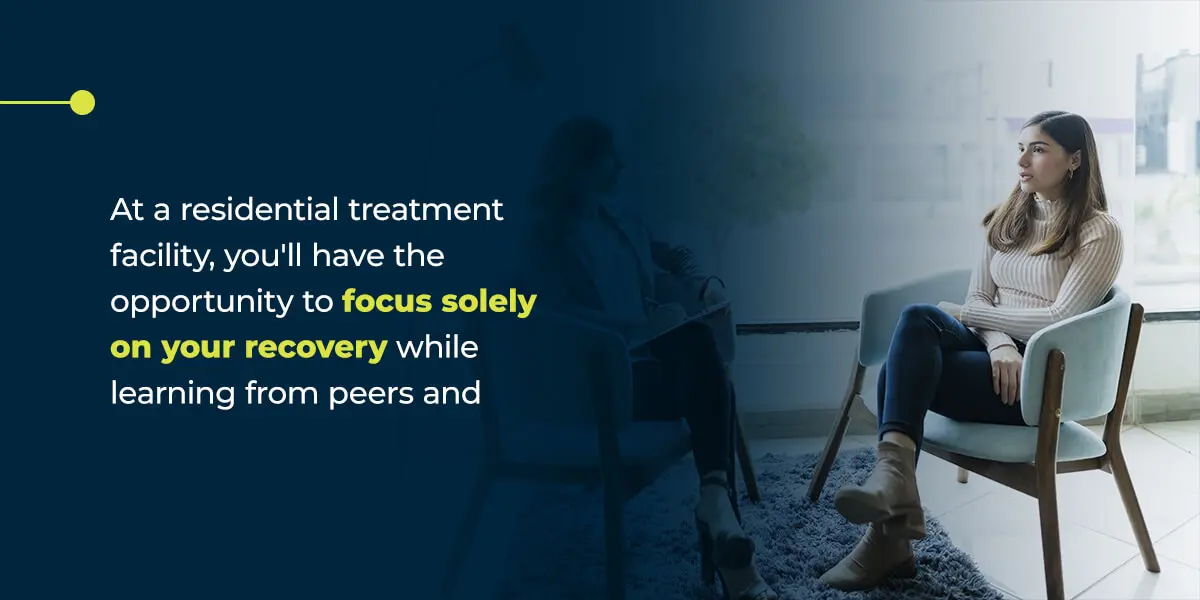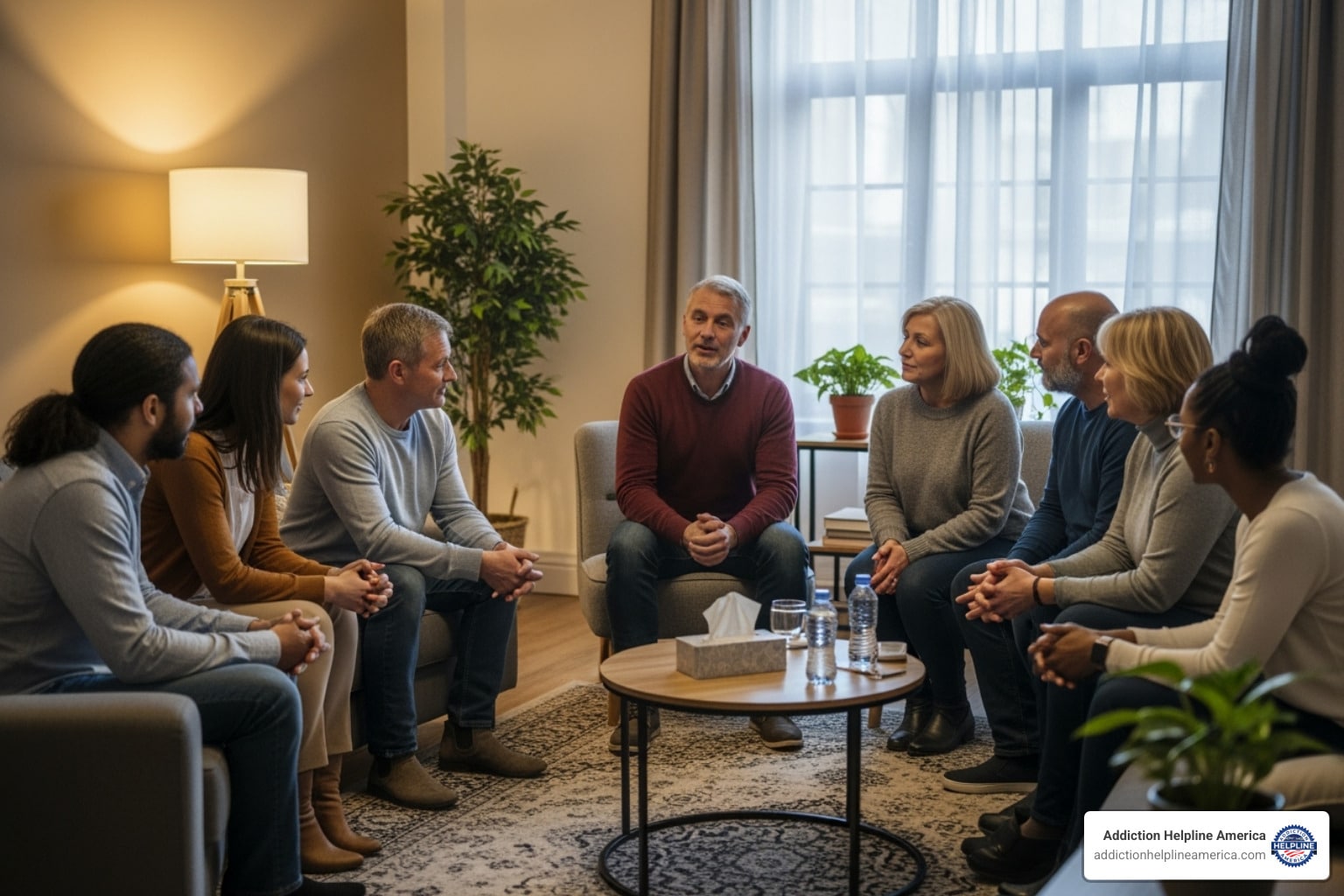Your Journey to a Healthier Life Starts Here
Free Insurance Verification
Verify Your Treatment Coverage
Verify Your Treatment Coverage
Valium Addiction Treatment is a medically supervised process to help individuals safely withdraw from Valium (diazepam) and rebuild their lives. Treatment is essential because Valium can become addictive in just 3-4 weeks, and quitting abruptly can cause life-threatening seizures. Combining it with alcohol or opioids dramatically increases overdose risk.
Treatment typically involves:
According to the 2020 National Survey on Drug Use and Health, 971,000 people misused diazepam in the past year. The problem is complex, as 95% of those in rehab for benzodiazepine addiction also struggled with another substance. But there is hope. With proper medical support and a strong recovery plan, thousands break free from Valium addiction each year.
At Addiction Helpline America, we provide compassionate, confidential support and connect you to evidence-based care. We’re here 24/7 to guide you toward recovery.

Valium, or diazepam, is a benzodiazepine prescribed to calm anxiety, stop seizures, and relax muscles. It works by boosting the effects of GABA, your brain’s natural calming chemical. Benzodiazepines enhance GABA effects to quickly reduce anxiety and tension.
This effectiveness creates a trap. With regular use, your brain adapts by reducing its natural GABA production, leading to tolerance in as little as three to four weeks. You then need higher doses for the same effect. If you stop suddenly, your brain goes into overdrive, causing withdrawal. This is physical dependence, which often accompanies addiction. To learn more, visit our page on the causes of addiction.
Long-term use can cause cognitive impairment, muscle weakness, poor coordination, and rebound anxiety, creating a cycle where the drug worsens the problem it was meant to solve.
Recognizing Valium addiction can be difficult, but clear red flags exist. Behavioral changes include taking more Valium than prescribed, “doctor shopping” for extra prescriptions, becoming secretive about use, and withdrawing from friends and family. Physical signs include constant drowsiness, slurred speech, disorientation, tremors, and needing higher doses to feel any effect. Psychological symptoms involve intense cravings, mood swings, memory problems, and neglecting responsibilities as your day revolves around the drug.
If these signs are familiar, it’s time to seek Valium Addiction Treatment. Recognizing the problem is the first step.
Taking Valium in any way not prescribed—such as crushing pills, taking higher doses, or using someone else’s prescription—dramatically increases the risk of overdose. The danger multiplies when Valium is combined with other central nervous system depressants like alcohol or opioids. The CDC warns that such polysubstance use is involved in most overdose deaths.
An overdose can cause respiratory depression, where breathing slows to a fatal level. Other signs include extreme drowsiness, unresponsiveness, poor coordination, and bluish lips or fingernails.
Another major risk is counterfeit pills. DEA data on counterfeit pills shows that fake pills looking identical to Valium often contain lethal doses of fentanyl. The DEA found that two out of every five fake pills contain a potentially deadly amount of this powerful opioid.
If you suspect an overdose, call 911 immediately. Keep the person awake and turn them on their side to prevent choking.
Quitting Valium “cold turkey” is extremely dangerous and can be life-threatening. When you take Valium regularly, your brain reduces its own production of the calming chemical GABA. Suddenly stopping the drug causes the central nervous system to rebound into a state of dangerous overexcitement.
This rebound can trigger severe withdrawal symptoms, including grand mal seizures, delirium, and hallucinations. For this reason, medically supervised withdrawal is essential for safe Valium Addiction Treatment. Medical professionals use a gradual tapering process, slowly reducing your dosage over weeks or months. This allows your brain to rebalance its chemistry safely, minimizing withdrawal severity and preventing dangerous complications. For a deeper understanding of the detox process, you can explore More info about detox.
Valium withdrawal varies but is often challenging. Because Valium is a long-acting benzodiazepine, the timeline can be extended. A general withdrawal timeline looks like this:

This extended timeline underscores the need for professional, structured treatment.
A medically supervised taper is the gold standard for stopping Valium. The plan is individualized, and the pace can be adjusted to manage withdrawal symptoms.
Certain medications can assist during withdrawal. Anticonvulsants like carbamazepine can help prevent seizures. Antidepressants like mirtazapine may be used for depression and insomnia. Other medications like buspirone and flumazenil are generally not recommended. The management of benzodiazepine dependence requires careful consideration of these options under strict medical supervision.
Effective Valium Addiction Treatment is not one-size-fits-all. The best programs create individualized care plans based on your medical, psychological, and social needs. This is known as a “continuum of care,” where you might move from medical detox to residential care and then to outpatient support.


Take the first step towards a healthier life! Call now to connect with our compassionate team and start your recovery journey today. Your path to healing awaits!
Our recovery specialists are available 24/7 to provide support, and all calls are confidential and free. Reach out anytime – we’re here to help!
Crucially, treatment must address the underlying reasons for addiction, such as anxiety or trauma, to provide healthier coping mechanisms. At Addiction Helpline America, we offer personalized guidance to help you find a path that fits. For more details, see our guide on choosing the right rehab facility.
Medical detox is the critical first step in recovery. Due to the severe risks of Valium withdrawal, including seizures, attempting to detox alone is unsafe. In a medical detox facility, you receive 24/7 professional supervision. Healthcare providers monitor your vitals, manage your tapering schedule, and provide medications to ensure your safety and comfort. Detox addresses the physical dependence, but it is not a complete cure. It prepares you for the psychological work of therapy that follows.
Inpatient or residential treatment offers the most comprehensive support. By living at the facility, you step away from daily triggers and focus entirely on recovery in a structured, safe environment. This level of care is ideal for those with severe addiction, polysubstance use (which affects 95% of people in rehab for benzodiazepines), or co-occurring mental health disorders like depression, anxiety, or PTSD. Programs typically last 28 to 90 days, providing the time needed to stabilize and build a foundation for recovery. For those with trauma, specialized PTSD inpatient treatment is available.
Outpatient treatment allows you to receive therapy while living at home and maintaining daily responsibilities. It’s a flexible option suitable for those with less severe addiction, strong home support, or as a step-down from inpatient care. Levels of intensity include:
Outpatient care allows you to apply recovery skills in your real-world environment. For maximum flexibility, virtual rehab options bring treatment directly to your home. Success in outpatient treatment requires commitment and honesty with your support team.
Completing a treatment program is the start of a new way of living. Recovery from Valium addiction is an ongoing process of using the tools learned in treatment to build a sustainable, healthy life. It requires developing effective coping skills, creating supportive habits, and having a solid aftercare plan.

Therapy is where you do the work of understanding the root causes of addiction and learning new ways to cope. Key approaches in Valium Addiction Treatment include:
Relapse can be a part of recovery, but a strong prevention plan significantly reduces the risk. Key strategies include:
Addiction Helpline America can connect you with therapists, support groups, and aftercare resources to support your journey.
Here are clear, honest answers to some of the most common questions about Valium addiction.
Yes. Even when following a doctor’s instructions, physical dependence can develop in as little as 3-4 weeks of regular use. Your body builds a tolerance, meaning you need more of the drug for the same effect. Physical dependence means your body has adapted and will experience withdrawal if you stop. This is different from addiction, which involves compulsive drug-seeking despite negative consequences. While dependence doesn’t always lead to addiction, it is a major risk factor. Honest communication with your doctor about your use is crucial. For more context, explore more info about the causes of addiction.
The duration varies based on dosage, length of use, and individual health. Because Valium is long-acting, the timeline can be extended. The acute phase, with the most intense symptoms, typically peaks in the second week and can last up to four weeks. Afterward, some people experience Post-Acute Withdrawal Syndrome (PAWS), where milder psychological symptoms like anxiety and mood swings can persist for months or even years. You can review a general withdrawal timeline and learn about protracted withdrawal symptoms for more detail. This unpredictable timeline makes a professional Valium Addiction Treatment plan essential.
Quitting Valium abruptly is life-threatening. Regular use makes your brain dependent on the drug to produce calming effects. When you suddenly stop, your central nervous system rebounds into a state of overexcitement. This can cause grand mal seizures, which can be fatal. Other severe risks include delirium (severe confusion), hallucinations, and extreme panic. The WHO guidelines on withdrawal management stress that medical supervision for benzodiazepine withdrawal is a safety imperative. Never attempt to stop taking Valium without professional medical guidance. Contact Addiction Helpline America 24/7 to find a safe way to quit.
Seeking information is a courageous first step. The path away from Valium addiction can feel isolating, but recovery is possible. Valium Addiction Treatment works, and thousands of people build new lives free from dependence every day.
You don’t have to do this alone. Addiction Helpline America provides free, confidential, and personalized guidance to connect you with the right recovery program. Our mission is to listen to your unique story and help you find a treatment center from our vast network that fits your specific needs.
We understand the fears and questions that come with seeking help—concerns about withdrawal, treatment costs, or whether your problem is “bad enough.” We are here to help you steer these concerns and find a solution.
Recovery is about more than just stopping a drug; it’s about building a life with healthier coping skills and genuine hope. It’s hard work, but you are strong enough to do it with the right support.
We are available 24/7. When you’re ready to explore your options, we’re here to guide you toward the next right step. You can learn More info about our rehabilitation services or find More info on addiction hotlines for immediate support. Your story doesn’t end here—let’s start the next chapter together.
Are you or a loved one struggling with addiction? Call today to speak to a treatment expert.
Calls to any general helpline will be answered or returned by one of the treatment providers listed, each of which is a paid advertiser:
Our helpline is available 24 hours a day, 7 days a week at no cost to you and with no obligation for you to enter into treatment. We are committed to providing support and guidance whenever you need it.
In some cases, Addiction Helpline America charges our verified partner a modest cost per call. This fee helps us cover the costs of building and maintaining our website, ensuring that we can continue to offer this valuable service to those in need.
Calls to the general helpline will be answered or returned by one of the listed treatment providers, all of whom are paid advertisers.
By using the helpline, you agree to the terms of use. We do not earn any commission or fee based on the treatment provider selected by the caller, and there is no obligation to pursue treatment.
This service is not affiliated with Alcoholics Anonymous World Services, Inc.